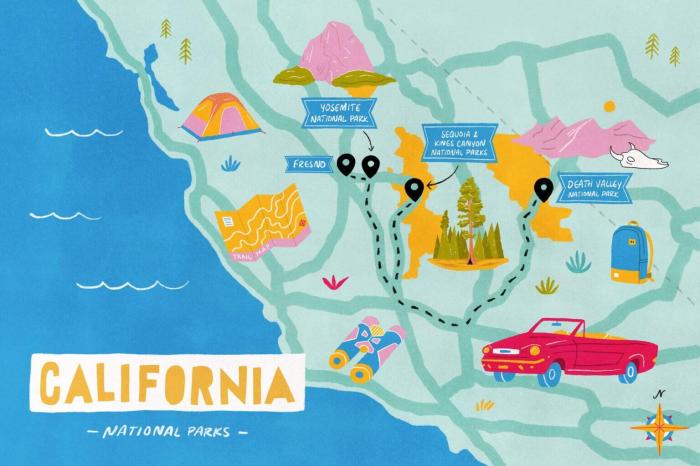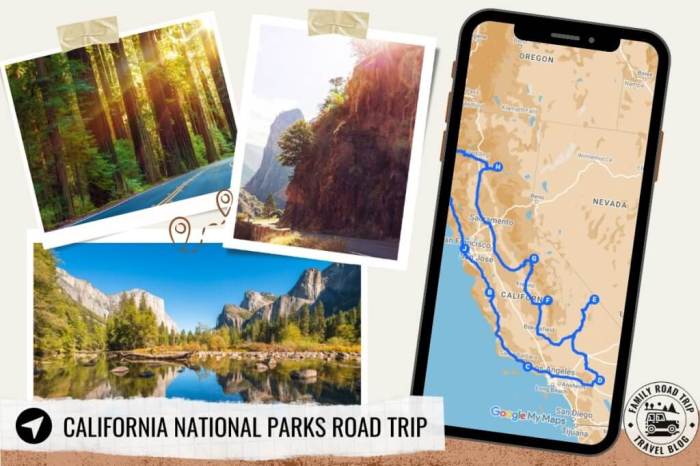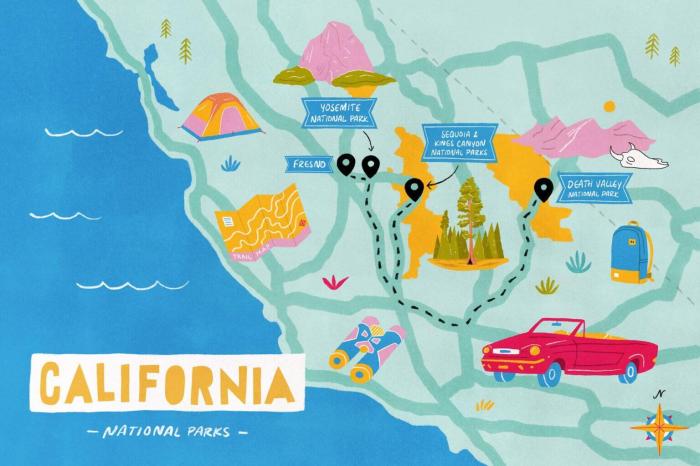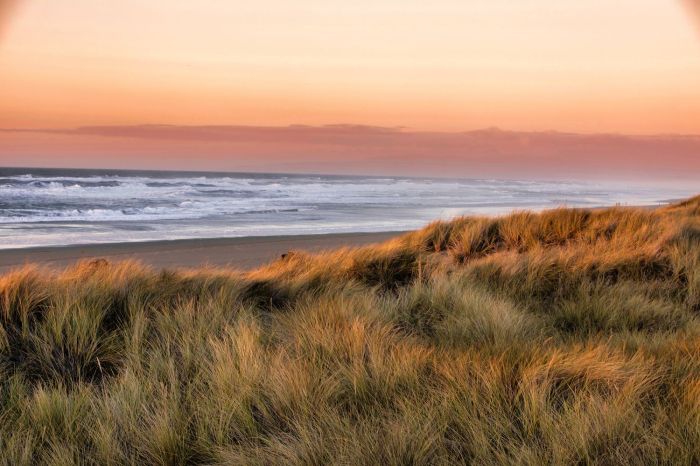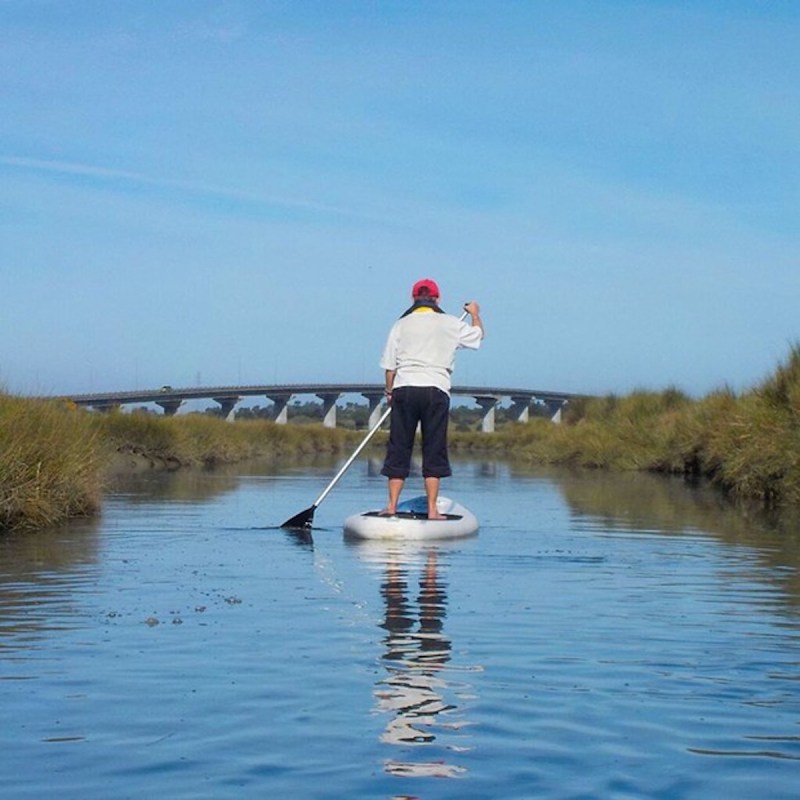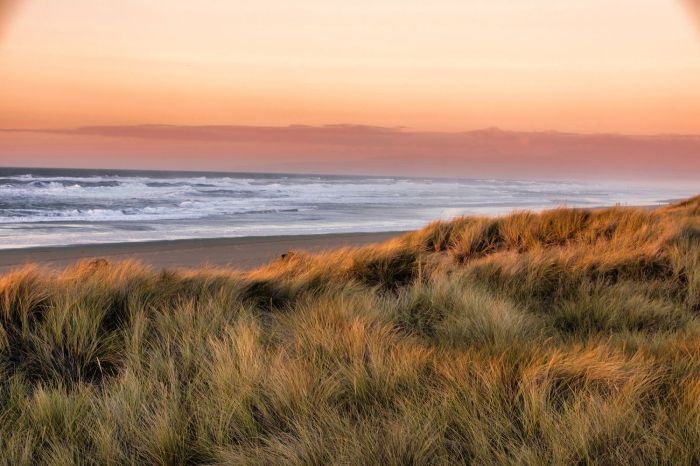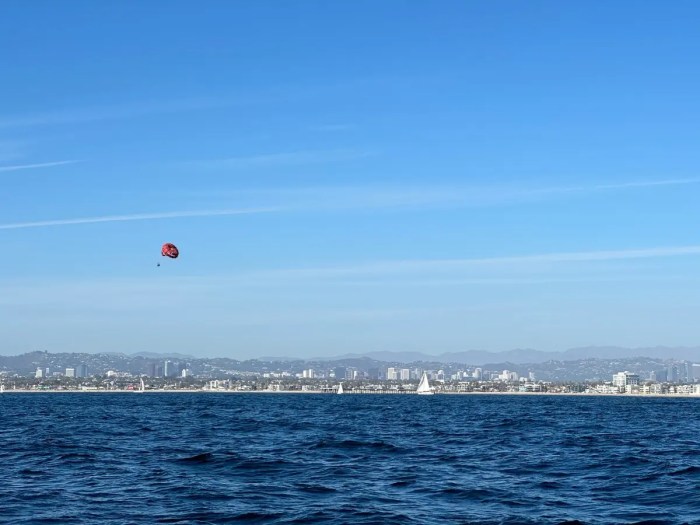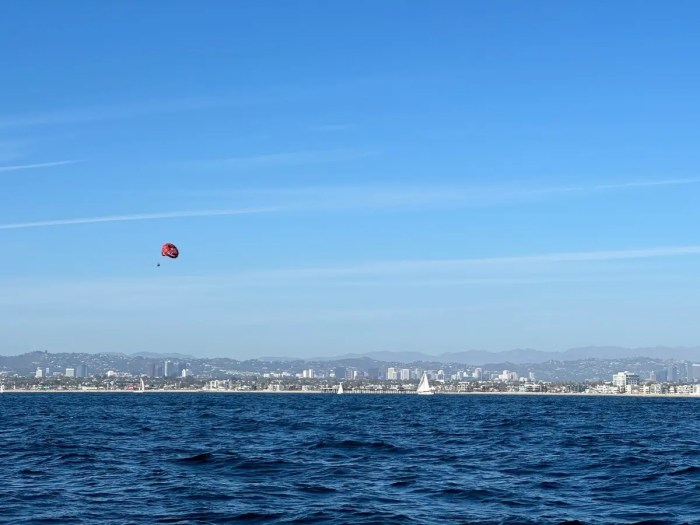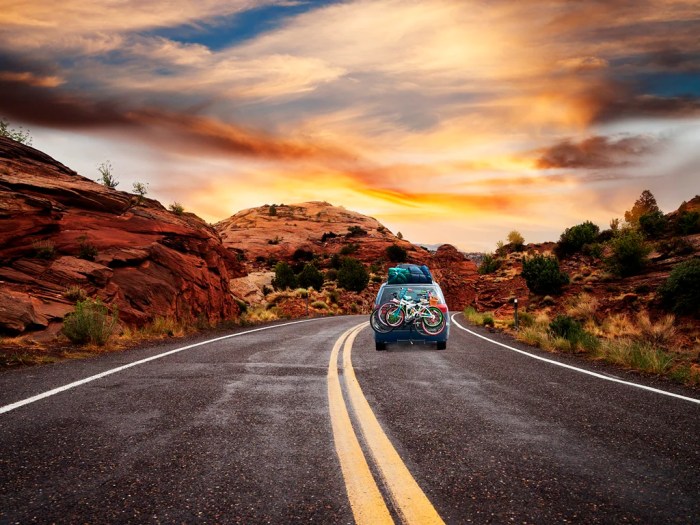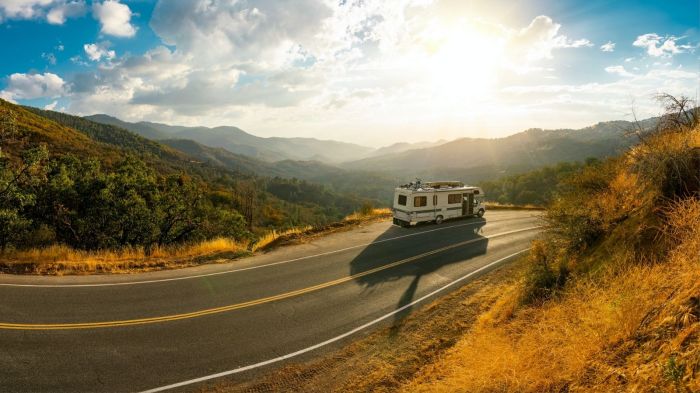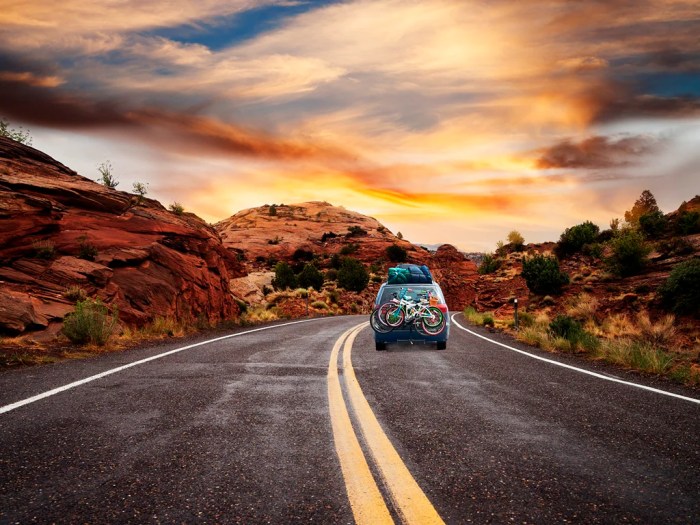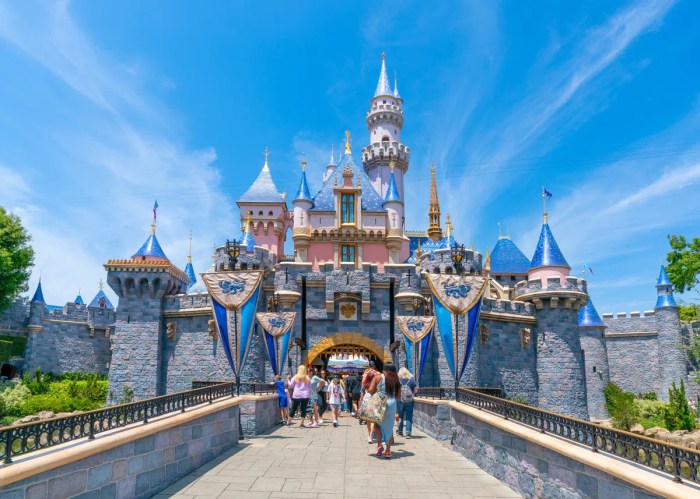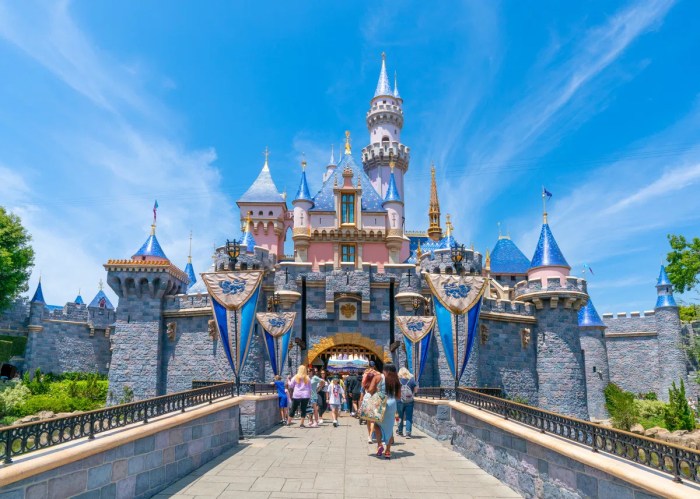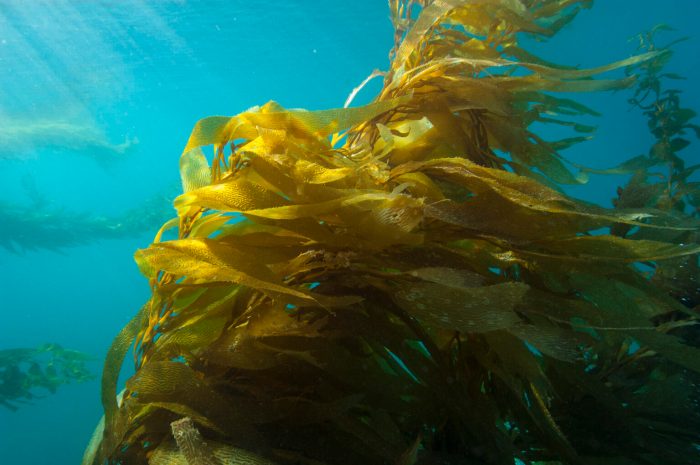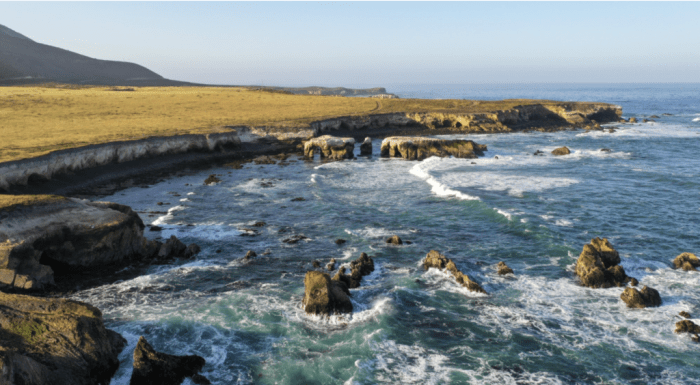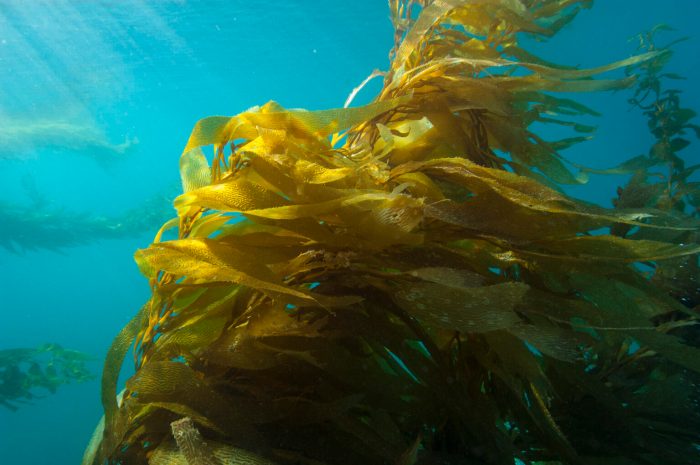Death Valley National Park guide: Embark on an unforgettable journey through one of the most extreme and awe-inspiring landscapes on Earth. From the scorching heat to the breathtaking vistas, this guide will equip you with the knowledge and insights needed to fully appreciate this unique national park. Discover the park’s rich history, explore its stunning attractions, and plan your perfect adventure.
This comprehensive guide will cover everything from must-see attractions to essential hiking tips, providing a detailed overview of Death Valley’s natural wonders, wildlife, and historical significance. It also includes crucial information on planning your trip, including the best time to visit, transportation options, and necessary permits. Furthermore, this guide will highlight the park’s services, ranger programs, and emergency resources, ensuring a safe and informative experience for every visitor.
Introduction to Death Valley National Park
Welcome to the hottest, driest, and lowest national park in the United States! Death Valley National Park, a breathtaking landscape of stark beauty, offers a unique and unforgettable experience for visitors. From towering mountains sculpted by time to shimmering salt flats stretching to the horizon, the park showcases a diverse range of geological formations and ecosystems. Prepare to be amazed by the sheer scale and dramatic contrasts that define this extraordinary natural wonder.This park, a testament to the power of nature, has witnessed millions of years of geological change.
Its unique position in the Mojave Desert, coupled with its extreme climate, has created an environment unlike any other in North America. Understanding its history and geography is key to appreciating the incredible stories etched into its very terrain.
Park Geography and Climate
Death Valley National Park is situated in the southeastern corner of California, bordering Nevada and extending into southeastern California. Its location in a basin and range region of the western United States means the park is surrounded by mountain ranges, creating a dramatic contrast with the valley floor. The park’s unique location in the Mojave Desert basin creates a microclimate that is unlike any other in the region.
- Extreme Temperatures: Death Valley is infamous for its extreme temperatures. Summer temperatures regularly surpass 120°F (49°C), with some records exceeding 130°F (54°C). Conversely, winter temperatures can drop below freezing, showcasing the dramatic range of conditions.
- Limited Rainfall: The park receives very little rainfall, making it one of the driest places in North America. Annual precipitation is typically less than 2 inches, leading to sparse vegetation and unique adaptations in the wildlife.
- Elevation Changes: Death Valley boasts a significant elevation range, from a high point of over 11,000 feet to a low point of 282 feet below sea level. This variation in altitude contributes to the diverse ecosystems and the stark contrasts in the landscape.
Park History and Significance
The park’s history is deeply intertwined with the region’s early inhabitants, including the Native American tribes who have lived in the area for millennia. The area was later explored by European Americans and eventually became a recognized national park.
- Early Inhabitants: Evidence suggests that Native American tribes, including the Timbisha Shoshone, have occupied the Death Valley region for thousands of years. Their deep connection to the land is reflected in their cultural traditions and stories passed down through generations.
- Early Exploration: The park’s rich history also includes stories of explorers and settlers, many of whom faced the harsh challenges of the desert environment. Their accounts offer valuable insights into the difficulties and resilience of early American pioneers.
- National Park Designation: Death Valley National Park was established in 1933. This designation recognized the park’s unique geological formations, extreme climate, and cultural significance, ensuring its protection for future generations.
Key Attractions
Death Valley offers a stunning array of natural wonders. From the vibrant colors of Badwater Basin, the lowest point in North America, to the mysterious rock formations of Zabriskie Point, the park is a feast for the eyes.
- Badwater Basin: Badwater Basin is the lowest point in North America, located 282 feet below sea level. The stark landscape, often tinged with vibrant colors, provides a striking visual experience. Visiting this spot can be incredibly meaningful, offering a unique perspective on the Earth’s geography.
- Zabriskie Point: The dramatic, colorful hills of Zabriskie Point provide an awe-inspiring vista of the valley floor. The formations are unique and the colors are vivid.
- Artist’s Drive: This scenic route offers breathtaking views of the park’s landscape, including salt flats, mountains, and canyons. The road is a photographer’s paradise.
Must-See Attractions
Death Valley National Park boasts a stunning array of natural wonders, each sculpted by millions of years of geological forces and extreme environmental conditions. From towering mountains to shimmering salt flats, the park’s diversity offers an unforgettable journey through time and nature’s artistry. These captivating attractions are a testament to the park’s unique ecosystem and provide visitors with a glimpse into a landscape unlike any other.
Iconic Landscapes
The park’s dramatic landscapes are a primary draw, showcasing the park’s geological history. These features offer unique perspectives and highlight the park’s beauty and harsh beauty.
- Badwater Basin: The lowest point in North America, Badwater Basin offers a profound perspective on the park’s elevation variations. The sheer scale of the basin, coupled with the stark beauty of the surrounding landscape, is truly awe-inspiring. Visitors can experience the dramatic transition from towering peaks to the basin’s flat expanse. Accessibility is good, with a paved trail providing easy access to the basin’s lowest point.
The visitor experience is one of profound reflection on the vastness of nature and the park’s unique topography.
- Zabriskie Point: This iconic viewpoint showcases the park’s sculpted hills and colorful rock formations. The vibrant hues of the eroded sandstone create a breathtaking panorama. Accessibility is good, with a parking area and well-maintained trails for easy access to the viewpoint. The visitor experience is one of capturing the dramatic colors and textures of the sculpted hills.
- Artist’s Drive: This scenic drive winds through the park, offering a glimpse of various landscapes, from colorful hills to unique rock formations. The drive’s route allows for numerous stops and photo opportunities, showcasing the diverse beauty of the park. Accessibility is good, with well-maintained roads and designated parking areas. The visitor experience is one of continuous discovery and appreciation of the park’s geological formations.
Unique Geological Features
These features offer a glimpse into the geological history of the park.
- Dante’s View: This panoramic viewpoint provides a sweeping vista of the Death Valley landscape. The name is derived from the dramatic and imposing nature of the view. The panoramic views of the surrounding mountains, valleys, and the Badwater Basin are a key feature. Accessibility is moderate, requiring a short but steep hike to the overlook. The visitor experience involves appreciating the vista of the valley, the peaks, and the expanse of the basin.
- Mesquite Flat Sand Dunes: These dunes, formed by the wind over eons, are a unique landscape feature. Their shifting sands and diverse textures create a captivating sight. Accessibility is good, with a paved area for parking and trails for exploring the dunes. The visitor experience is one of exploring the dynamic and constantly changing sand formations.
Accessibility and Visitor Experience Comparison
This table summarizes the top attractions, their type, location, and estimated difficulty.
| Attraction | Type | Location | Difficulty |
|---|---|---|---|
| Badwater Basin | Lowest Point in North America | Southeastern Death Valley | Easy |
| Zabriskie Point | Viewpoint | Central Death Valley | Easy |
| Artist’s Drive | Scenic Drive | Central Death Valley | Easy |
| Dante’s View | Panoramic Viewpoint | Northeastern Death Valley | Moderate |
| Mesquite Flat Sand Dunes | Sand Dunes | Eastern Death Valley | Easy |
Hiking and Outdoor Activities
Death Valley National Park offers a plethora of hiking and outdoor adventures, catering to various experience levels. From challenging climbs to leisurely strolls, the park’s diverse terrain provides opportunities for exploration and connection with nature. The park’s unique landscape, ranging from towering mountains to vast, arid valleys, demands careful planning and preparation.
Hiking Trails
The park boasts a wide array of hiking trails, varying significantly in difficulty and duration. These trails traverse diverse landscapes, exposing hikers to the park’s stunning beauty. Choosing the right trail depends on your fitness level and desired experience. Whether you’re seeking a challenging summit or a relaxing stroll, Death Valley has a trail for you.
- Easy to Moderate Trails: These trails are perfect for families and beginners. They often involve gentle inclines and relatively short distances, allowing for a pleasant experience. Examples include the Golden Canyon Trail and the Zabriskie Point Trail. These trails offer rewarding views without demanding excessive physical exertion.
- Moderate to Strenuous Trails: These trails present a greater challenge, with steeper inclines, longer distances, and potentially more demanding terrain. They often reward hikers with breathtaking panoramic vistas. An example is the Dante’s View Trail, offering expansive views of the valley. Preparation and appropriate gear are essential for these trails.
- Strenuous Trails: These trails are reserved for experienced hikers. They often involve significant elevation gain, rugged terrain, and extended distances. The Mount Whitney Trail, a renowned climb, is an example of a strenuous trail, offering a challenging ascent to the highest peak in the contiguous United States.
Essential Gear and Safety Precautions
Hiking in Death Valley requires careful preparation. The extreme temperatures and unique environmental conditions necessitate appropriate gear and safety precautions. Accidents can occur easily in this harsh environment.
- Hydration is paramount. Carry plenty of water, and consider electrolyte supplements to replace lost minerals. The importance of hydration cannot be overstated.
- Sunscreen, a wide-brimmed hat, sunglasses, and protective clothing are essential to shield yourself from the intense sun. These items are critical for protection from the sun’s harmful rays.
- Appropriate footwear is critical. Hiking boots or sturdy trail shoes are necessary for stability and support on various terrains. Avoid sandals or flip-flops.
- First-aid kit, a map, compass, and a fully charged cell phone are vital. A fully charged cell phone is essential for emergencies.
- Inform someone of your hiking plans, including route, estimated return time, and any potential contact information. This is a critical step for safety.
Camping and Lodging Options
Death Valley offers various camping and lodging options to suit different preferences and budgets. The availability of lodging depends on the time of year.
- Campgrounds: The park offers several campgrounds, each with its own amenities. Reservations are highly recommended, especially during peak season. These campgrounds provide a unique opportunity to experience the park’s wilderness.
- Lodging: Outside the park, you’ll find various hotels and motels, ranging from budget-friendly options to luxurious resorts. Many hotels provide a more convenient and comfortable experience, especially for longer stays.
Outdoor Activities Beyond Hiking
Beyond hiking, Death Valley provides numerous other outdoor activities.
- Biking: The park’s paved and unpaved roads offer opportunities for biking. Explore the park’s diverse landscapes at your own pace on two wheels. Bike rentals are available at some locations.
- Wildlife Viewing: While wildlife sightings are not guaranteed, Death Valley does support a range of animal species. Keep a respectful distance from any animals you encounter. Be mindful of the animals’ natural habitats.
Popular Hiking Trails
| Trail Name | Distance (miles) | Difficulty | Recommended Season |
|---|---|---|---|
| Golden Canyon Trail | 2 | Easy | Spring, Fall |
| Zabriskie Point Trail | 3 | Moderate | Spring, Fall |
| Dante’s View Trail | 5 | Moderate | Spring, Fall |
| Mount Whitney Trail | 21 | Strenuous | Summer |
Wildlife and Natural Wonders: Death Valley National Park Guide
Death Valley National Park, a stark landscape of canyons, mountains, and basins, is a testament to the power of nature. Beyond its dramatic beauty, the park is a haven for a surprisingly diverse array of wildlife, adapted to the extreme conditions. This resilience is mirrored in the park’s unique geological formations, which have sculpted the valley over millions of years.
A Symphony of Desert Life
The park’s wildlife is a fascinating blend of species that have evolved to thrive in this harsh environment. From the desert tortoise, a slow-moving but enduring symbol of the region, to the elusive desert bighorn sheep, these creatures have developed remarkable strategies for survival in the face of scorching heat and scarce water. Coyotes, jackrabbits, and various bird species also call Death Valley home.
Geological Sculptures, Death valley national park guide
Death Valley’s geological formations are as captivating as its wildlife. The park’s canyons, like Zabriskie Point, with its dramatic layered colors, showcase the forces of erosion over millennia. The mountains, sculpted by tectonic activity, stand as silent sentinels against the sky. The vast basins, like Badwater Basin, the lowest point in North America, reveal the park’s complex history.
These diverse landscapes create a unique and awe-inspiring ecosystem.
A Look at the Fauna
This table highlights some of the remarkable animals that call Death Valley home, along with approximate locations within the park. Keep in mind that wildlife sightings are not guaranteed and can vary greatly depending on the time of year and specific location.
| Species | Approximate Location(s) | Habitat Notes |
|---|---|---|
| Desert Tortoise | Throughout the park, particularly in the desert scrub | Known for their ability to withstand extreme temperatures and long periods without water. |
| Desert Bighorn Sheep | Mountainous areas, such as the Panamint Range | These agile creatures are adapted to steep slopes and rugged terrain. |
| Coyote | Widely distributed throughout the park | Opportunistic omnivores, thriving in various habitats. |
| Jackrabbit | Open grasslands and desert scrub | Highly adaptable to varying temperatures and vegetation. |
| Various Bird Species | Oases, riparian areas, and along the valley floor | Many migratory birds pass through the park or find refuge during specific seasons. |
Ecological Importance
Death Valley’s unique ecosystem plays a crucial role in the larger desert biome. Its diverse habitats, from the salt flats to the rocky mountains, support a surprisingly rich array of life. The park’s ecological importance extends beyond its borders, influencing the broader desert environment and showcasing the remarkable adaptations of life in extreme conditions. Protecting this fragile ecosystem is crucial for the long-term health of the entire region.
Planning Your Trip

Death Valley National Park, with its extreme temperatures and unique landscapes, requires careful planning. Understanding the park’s conditions, especially during peak season, is crucial for a safe and enjoyable experience. This section will guide you through the essentials of trip preparation, from choosing the right time to visit to packing the appropriate gear.Careful planning is key to maximizing your time in Death Valley.
Acclimatizing to the extreme environment and anticipating potential challenges will help you make the most of your adventure.
Planning a Death Valley National Park guide is a fantastic idea, especially for a thirtysomething looking for an unforgettable adventure. Thinking about the best trips for this age group, like those outlined in trip ideas best trips for thirty year , helps you tailor the experience to your needs and interests. The park’s stunning landscapes and unique wildlife make it a perfect fit for a truly memorable journey.
Ultimately, a Death Valley National Park guide will help you discover the hidden gems and plan your incredible trip.
Best Time to Visit
Death Valley’s climate is notoriously harsh, with extreme temperatures ranging from scorching heat in summer to freezing cold in winter. The best time to visit is generally during the spring and fall months. Spring offers pleasant daytime temperatures, while fall provides a delightful transition into cooler evenings. Summer temperatures can soar to over 120°F, making prolonged outdoor activities extremely challenging.
Winter can bring snowfall, but access to certain areas may be limited.
Booking Accommodations and Permits
Accommodations within Death Valley National Park are limited, especially during peak season. Reservations should be made well in advance, often months ahead of time. Camping reservations are also highly recommended, as campsites fill quickly. Ensure you check the official park website for current availability and booking procedures. Some areas require permits for specific activities, such as overnight backpacking or backcountry camping.
These permits are often allocated on a first-come, first-served basis and should be applied for well in advance.
Transportation and Parking
The park’s vast size necessitates a reliable vehicle for navigating the diverse terrain. Renting a four-wheel-drive vehicle might be advantageous for some sections. Parking is available at various visitor centers and trailheads. However, parking can be limited, especially during peak hours. Consider using the park’s shuttle system to reduce parking stress and travel between areas.
Mitigating Challenges
Extreme heat is a significant challenge in Death Valley. Hydration is paramount. Carry plenty of water and electrolytes, and take frequent breaks in shaded areas. Sun protection is also crucial. Wear sunscreen, a wide-brimmed hat, and sunglasses to protect yourself from the intense sun.
Be aware of the park’s heat warnings and adjust your activities accordingly. Early morning and late evening are often the best times for hiking and exploring. Planning your activities around these cooler periods can greatly enhance your experience.
Checklist for Visitors
- Review park regulations and guidelines.
- Check weather forecasts and prepare for extreme temperatures.
- Make reservations for accommodations (campgrounds, hotels) well in advance.
- Obtain any necessary permits (backcountry permits).
- Plan your transportation, considering the vast size of the park.
- Pack appropriate clothing and gear for different activities (hiking, camping).
- Carry plenty of water and high-energy snacks.
- Ensure your vehicle is properly equipped (spare tire, tools).
- Inform someone of your itinerary.
- Be prepared for potential emergencies.
What to Bring
- Hiking: Hiking boots, layers of clothing (especially in cooler evenings), sunscreen, hat, sunglasses, water bottles, snacks, first-aid kit, map and compass or GPS.
- Camping: Tent, sleeping bag, sleeping pad, cooking equipment, food, water, cooler, lantern or flashlight, insect repellent, and extra clothing.
- Wildlife Viewing: Binoculars, field guides (optional), and a respectful distance from animals.
- General Supplies: Sunscreen, sunglasses, hat, extra batteries for cameras and electronics, first-aid kit, reusable water bottles, and a way to stay connected (cell phone or satellite phone).
Visitor Information and Services
Navigating Death Valley National Park requires a proactive approach, especially given the extreme conditions. Knowing the available resources, services, and regulations empowers you to enjoy your trip safely and responsibly. This section provides crucial information to enhance your park experience.Death Valley’s visitor centers and ranger programs are key components of a smooth and informed visit. Understanding the park’s rules, emergency protocols, and permitted activities will make your journey more rewarding and safe.
Visitor Centers and Ranger Programs
Visitor centers serve as hubs for information and assistance. They provide maps, brochures, and insights into the park’s history, geology, and ecology. Ranger programs, often offered throughout the day, offer a deeper understanding of the park’s unique features and natural wonders. These programs range from talks on local wildlife to guided hikes, enriching the visitor experience.
I’m currently deep into planning my Death Valley National Park guide, and honestly, the sheer beauty of that place is inspiring me to dream big! It’s got me thinking about other incredible destinations, like the amazing opportunities for relaxation and adventure in the Mexican Caribbean. Have you entered the mexican caribbean vacation competition yet? Regardless of my travel choices, Death Valley’s stunning landscapes and unique geological formations are definitely worth exploring.
I’m determined to make this Death Valley guide unforgettable.
Park Rules and Regulations
Death Valley National Park has specific regulations to ensure the safety and preservation of this unique environment. Respecting these rules protects both visitors and the fragile ecosystem. Prohibited activities, like unauthorized camping or disturbing wildlife, are essential to maintain the park’s delicate balance. Strict adherence to posted signs and regulations is vital for a positive experience for everyone.
Emergency Services and Resources
Knowing the emergency services and resources available is crucial for any outdoor adventure. The park maintains a network of emergency response systems and readily available support. Knowing the location of the nearest ranger station, first-aid facilities, and communication methods is paramount in unforeseen circumstances. Staying informed about emergency procedures and communication protocols will enhance safety.
Permitted and Prohibited Activities
Specific activities are permitted within the park to safeguard its environment. Regulations on camping, hiking, and vehicle use are crucial for maintaining the park’s ecological integrity. These regulations help prevent damage to sensitive ecosystems and promote responsible tourism. Understanding permitted activities ensures visitors enjoy the park responsibly. Prohibited activities, such as off-road driving or disturbing wildlife, protect the delicate balance of the park.
Contact Information
| Type of Service | Contact Information |
|---|---|
| Death Valley Visitor Center | (760) 786-3200 |
| Furnace Creek Ranger Station | (760) 786-3200 |
| Emergency Services (e.g., 911) | Dial 911 in case of emergencies |
Photography Opportunities

Death Valley’s otherworldly landscapes and vibrant wildlife offer a photographer’s paradise. From the stark beauty of Badwater Basin to the colorful hues of Zabriskie Point, capturing the park’s essence requires understanding the best times and locations. This guide will help you elevate your Death Valley photography, from landscapes to wildlife, showcasing the park’s unique allure through the lens.Capturing the essence of Death Valley often requires more than just a camera; it necessitates a keen understanding of the light, the location, and the subject.
Different times of day produce distinct moods, and choosing the right moment can transform a mundane scene into a breathtaking masterpiece. Understanding the interplay of light and shadow, as well as the composition of your shot, will greatly enhance your photographs.
Ideal Locations and Times for Stunning Photos
Death Valley’s beauty is best captured at specific times of day, when light casts dramatic shadows and highlights the landscape’s unique features. Sunrise and sunset offer the most vibrant colors, while midday sun can be harsh. Morning and evening light creates softer shadows and warmer tones, ideal for landscape photography. Midday offers opportunities for unique contrasts and dramatic light patterns.
- Sunrise and Sunset: Locations like Zabriskie Point, Dante’s View, and the Mesquite Flat Sand Dunes are perfect for witnessing the dramatic interplay of colors during sunrise and sunset. The warm hues paint the landscape in a magical light, creating a sense of awe and wonder.
- Midday: The unique rock formations and vast emptiness of the valley can be beautifully captured during midday. Midday sun can create strong shadows and high-contrast scenes, which, when properly managed, can create stunning images. The intense light often highlights textures and patterns in the rocks, revealing hidden details.
Essential Photography Techniques
Mastering photography techniques is crucial for capturing the full spectrum of Death Valley’s beauty.
- Landscape Photography: Use a wide-angle lens to capture the vastness of the valley. Experiment with different compositions, such as leading lines, rule of thirds, and symmetry, to create visually appealing images. Consider the foreground and background elements to add depth and context to your shots. For example, incorporating a foreground element, like a rock or a plant, can draw the viewer’s eye into the scene.
- Wildlife Photography: Use a telephoto lens to capture wildlife from a distance without disturbing them. Patience and a steady hand are essential. Pay close attention to the animal’s surroundings and try to anticipate their movements. Use a high shutter speed to freeze action and a wide aperture to create a shallow depth of field, isolating the subject from the background.
Famous Locations for Unique Photography Opportunities
Specific locations in Death Valley are renowned for their unique photographic potential.
- Badwater Basin: The lowest point in North America offers a unique opportunity to capture the vastness and desolation of the valley. The extreme conditions can create powerful visual narratives. The stark contrast between the landscape and the feeling of remoteness will make your photos stand out.
- Zabriskie Point: This iconic location features colorful hills and dramatic rock formations. The unique geological features offer a variety of angles and perspectives. The colorful hues of the hills and the textures of the rock formations make for captivating photos.
- Artist’s Drive: This scenic route offers numerous opportunities to capture stunning vistas. The various rock formations and the vast open spaces make for an excellent subject for landscape photography. The route offers a variety of photographic opportunities, from capturing the vastness of the landscape to focusing on individual rock formations.
Inspirational Image Descriptions
Imagine a sunrise painting the rugged peaks of the mountains in fiery oranges and purples, casting long shadows across the desert floor. Or picture the shimmering salt flats of Badwater Basin under the harsh midday sun, reflecting the intense light in a dazzling display. These visual moments capture the essence of Death Valley, showcasing its grandeur and beauty.
The image evokes a sense of wonder and solitude.
Planning a Death Valley National Park adventure? Getting your hands on a good guidebook is crucial. While exploring the scorching landscapes, you might also find yourself craving a cultural experience, perhaps like the vibrant street food and bustling atmosphere of Hong Kong’s West Kowloon Culture District. To fully appreciate the diversity of travel experiences, you should definitely check out Hong Kong West Kowloon Culture District for a taste of the city’s unique offerings.
Ultimately, a Death Valley guide can help you navigate the park’s many trails and natural wonders.
Food and Drink
Death Valley’s extreme climate presents unique challenges for food service, but intrepid visitors are rewarded with a surprisingly diverse range of dining options, from casual picnic spots to more substantial meals. The availability of food and drink directly correlates with the visitor density and the proximity to the park’s amenities. Understanding these factors helps visitors plan their culinary experiences effectively.Dining choices within Death Valley National Park range from simple snacks and drinks at visitor centers to full-service restaurants and cafes at the park’s entry points.
The quality of service varies depending on the establishment and the time of year, but overall, the service aims to cater to the needs of visitors while navigating the park’s unique conditions. Hydration is paramount, so the availability of water is a significant consideration.
Food Options Within the Park
A variety of food options are available, catering to different needs and preferences. These include picnic areas with basic provisions, vending machines, and concession stands at visitor centers. Some establishments offer prepared meals and snacks. Essential supplies like water, snacks, and drinks are always available.
Local Delicacies
While Death Valley isn’t known for specific culinary traditions, the regional food scene offers a chance to sample local produce, which might include fresh fruits or vegetables, depending on the season. It’s worth checking for seasonal menus, which might showcase local produce and reflect the region’s agricultural offerings.
Restaurants Near the Park Entrance
Several restaurants are situated near the park entrance, offering a range of options for those who prefer a sit-down meal before or after their park exploration. These restaurants typically offer standard American fare, potentially with some regional twists. These eateries often have menus designed to cater to the needs of visitors, considering the potential for heat-related concerns and hydration requirements.
Food Options Table
| Food Option | Location | Price Range |
|---|---|---|
| Picnic Supplies (Water, Snacks) | Various Picnic Areas | $5-$25 |
| Concession Stand Items | Visitor Centers | $3-$15 |
| Prepared Meals | Visitor Centers/Cafes | $10-$30 |
| Restaurant Meals (Near Entrance) | Restaurants near the entrance | $15-$40 |
Historical Significance and Stories
Death Valley National Park, a land sculpted by time and hardship, holds within its canyons and shimmering plains a rich tapestry of human history. From the earliest inhabitants to the intrepid explorers and settlers who followed, the park’s story is one of resilience, adaptation, and the enduring power of the natural world. This chapter delves into the past, revealing the echoes of those who came before us and the stories they left behind.The park’s historical narrative isn’t just about dates and events; it’s about the people who lived, worked, and struggled in this unforgiving landscape.
Understanding their experiences provides a deeper appreciation for the park’s beauty and the challenges faced by those who called it home.
Early Inhabitants and Indigenous Cultures
The region now known as Death Valley has been inhabited for millennia. Evidence suggests that various Native American tribes, including the Timbisha Shoshone, have lived and thrived in the area for centuries. They developed intricate knowledge of the land’s resources, adapting their lifestyles to the extreme conditions. Understanding their connection to the valley provides a crucial insight into the park’s rich history.
Explorers and Settlers
The arrival of European explorers marked a turning point in Death Valley’s history. Their accounts, often intertwined with hardship and discovery, offer a fascinating glimpse into the challenges and motivations of these early pioneers. They were often driven by the allure of gold, or simply by the spirit of exploration.
- John C. Frémont, a renowned explorer, documented his travels through the region in the mid-19th century, leaving behind valuable observations of the valley’s unique geological features. His expeditions provided early insights into the valley’s stark beauty and its unforgiving nature.
- William H. Brewer, a geologist and botanist, conducted surveys in the region in the 1860s. His meticulous observations contributed significantly to the scientific understanding of Death Valley and its surrounding areas.
- The discovery of gold in the 1849 California Gold Rush spurred increased interest in the area. Prospectors, drawn by the promise of riches, often found themselves caught in the brutal grip of the valley’s unforgiving environment.
Historical Sites and Structures
Death Valley National Park preserves a variety of historical sites that offer tangible connections to the past. These structures, remnants of settlements and outposts, provide a visual narrative of human resilience in the face of adversity.
- The Furnace Creek Ranch, a prominent landmark, stands as a testament to the efforts of settlers who established a thriving community in the valley. Its story encompasses the trials and tribulations of establishing a self-sufficient life in such a harsh environment.
- The borax mines, once vital for the valley’s economy, serve as a reminder of the region’s significant role in the early American West. These sites offer insights into the methods and processes of early resource extraction in the region.
- The historic buildings and infrastructure within the park serve as visual reminders of human activity and innovation within the park. These buildings, though weathered by time, still offer insight into the lives of those who lived and worked in Death Valley.
Timeline of Important Events
A chronological overview of pivotal moments in Death Valley’s history provides a clearer understanding of the park’s development.
| Year | Event |
|---|---|
| 1849 | California Gold Rush begins, attracting prospectors to the Death Valley area. |
| 1860s | Geological and botanical surveys by William H. Brewer shed light on the valley’s unique features. |
| 1933 | Death Valley National Park established, preserving the region’s natural and cultural heritage. |
Ultimate Conclusion
In conclusion, this Death Valley National Park guide offers a comprehensive resource for planning your visit. Armed with insights into the park’s attractions, activities, and essential information, you’ll be well-prepared to experience the unique beauty and challenges of this iconic national park. From the vibrant wildlife to the rugged landscapes, Death Valley has something to offer every explorer.
Enjoy your adventure!



